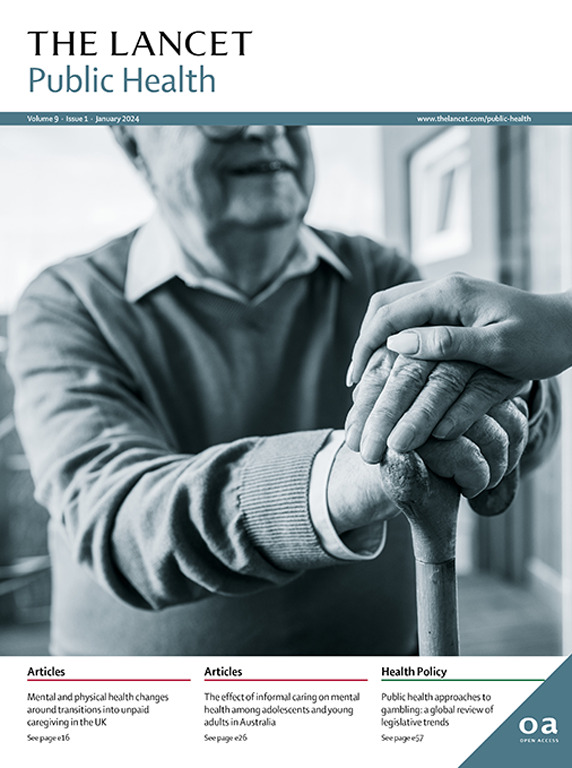缩小残疾人死亡率差距
IF 25.4
1区 医学
Q1 PUBLIC, ENVIRONMENTAL & OCCUPATIONAL HEALTH
引用次数: 0
摘要
全球约有13亿残疾人,他们较高的死亡率意味着他们比非残疾人早死14年左右。在这一期的《柳叶刀公共卫生》杂志上,杨毅及其同事的研究为这一文献提供了补充。他们利用来自1500万澳大利亚人的大规模纵向数据表明,残疾人的不平等程度很高——无论是在绝对规模还是相对规模上,以及在不同的死亡原因上。总的来说,残疾男性的死亡率比非残疾同龄人高出3.7倍,残疾女性的死亡率高出4.6倍。这条增加了关于死亡率和残疾之间关系的越来越明确的证据。它还强调了在公共卫生行为体开始认真对待这一问题之前需要解决的三个关键问题。本文章由计算机程序翻译,如有差异,请以英文原文为准。
Closing the mortality gap for people with disabilities
There are about 1·3 billion people with disability globally, and their higher mortality rates mean that they are dying about 14 years earlier than people without disability.1, 2 In this issue of The Lancet Public Health, Yi Yang and colleagues’ study3 adds to this literature. Using large-scale longitudinal data from 15 million Australians, they showed that people with disability have high inequalities—whether measured on an absolute or relative scale and across different causes of death. Overall, mortality rates were about 3·7-times higher for men with disability and about 4·6-times higher for women with disability than their non-disabled peers. This Article3 adds to the growing, unequivocal evidence on the relationship between mortality and disability. It also highlights three key questions that need to be addressed before public health actors start to take this issue seriously.
求助全文
通过发布文献求助,成功后即可免费获取论文全文。
去求助
来源期刊

Lancet Public Health
Medicine-Public Health, Environmental and Occupational Health
CiteScore
55.60
自引率
0.80%
发文量
305
审稿时长
8 weeks
期刊介绍:
The Lancet Public Health is committed to tackling the most pressing issues across all aspects of public health. We have a strong commitment to using science to improve health equity and social justice. In line with the values and vision of The Lancet, we take a broad and inclusive approach to public health and are interested in interdisciplinary research.
We publish a range of content types that can advance public health policies and outcomes. These include Articles, Review, Comment, and Correspondence. Learn more about the types of papers we publish.
 求助内容:
求助内容: 应助结果提醒方式:
应助结果提醒方式:


